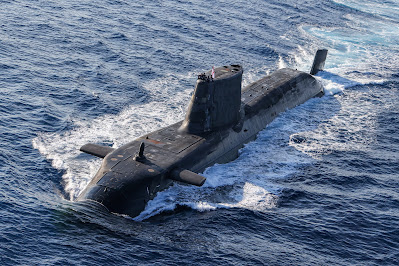The British Army does not maintain a fleet of trains to patrol the United Kingdom’s railway network and An Independent Navy For An Independent Nation shall not maintain a fleet of vessels to patrol undersea infrastructure for the same reason,because to protect infrastructure it is necessary to keep the enemy away from it.
Protecting undersea infrastructure shall start with routine surveillance and targeting of enemy naval facilities and vessels by strategic assets such as spies,satellites and high level military and naval assets such as An Independent Army For An Independent Nation’s network of active and passive sensors and their naval equivalents.
At sea hostile vessels shall be tracked or attacked by the Perseus aeroplane (at least forty of which could have been paid for with the thousands of millions of pounds spent on Nimrod,Sentinel,Reaper,Airseeker,Crowsnest,Poseidon,Wedgetail,Protector and Envoy),which shall have a comprehensive suite of active and passive above and below water sensors and the weapons to exploit it.
Beneath the waves the six Cachalot class and two Defence class submarines (boats which could have been built with the money spent on seven Astutes) shall also track and if necessary attack enemy surface vessels and submarines using twenty-four inch torpedoes.
On the surface these shall be supported by the remainder of the thirty-two Duke and Royal Duke class frigates,the latter of which could have been built after the Blair defence cuts for far less than the cost of six Daring class air defence destroyers,and the first of twenty-four Falkland class frigates,which the Royal Navy had the money to build after the Cameron cuts (but instead chose to spend on River class patrol vessels,refits for Type 23 submarine defence frigates,repairs for Type 45 air defence destroyers,Type 26 submarine defence frigates,Type 31 point defence "frigates" and Type 32 mystery frigates),all of which shall have towed array sonars and Merlin or Hermes helicopters.
Should a hostile vessel get near an undersea cable then one of the thirty knot hydrographing sloops Hecate,Hecla,Herald and Hydra shall rapidly respond,surveying the cable with it’s high resolution towed sonar and investigating and neutralising any devices found using it’s tethered submersibles (a product of project Geppetto,which shall provide a sovereign and secure supply of small submersibles for tasks such as survey,construction,rescue,repair,hull cleaning and mine hunting).
When not responding to contingencies,the Hydrographic Squadron's Hecate class shall routinely conduct low resolution but wide swathe deep water surveys of the sea bed using their hull mounted sonars,high resolution but narrow swathe deep water surveys of features such as ship wrecks and pipelines using their towed sonars,visual inspection of points of interest using their tethered submersibles,high resolution but narrow swathe shallow water surveys of coastal and inland areas using their hydrographing boats,high resolution coastal surveys using their synthetic aperture radars and shall occasionally perform overland surveys using an embarked helicopter detachment.







No comments:
Post a Comment